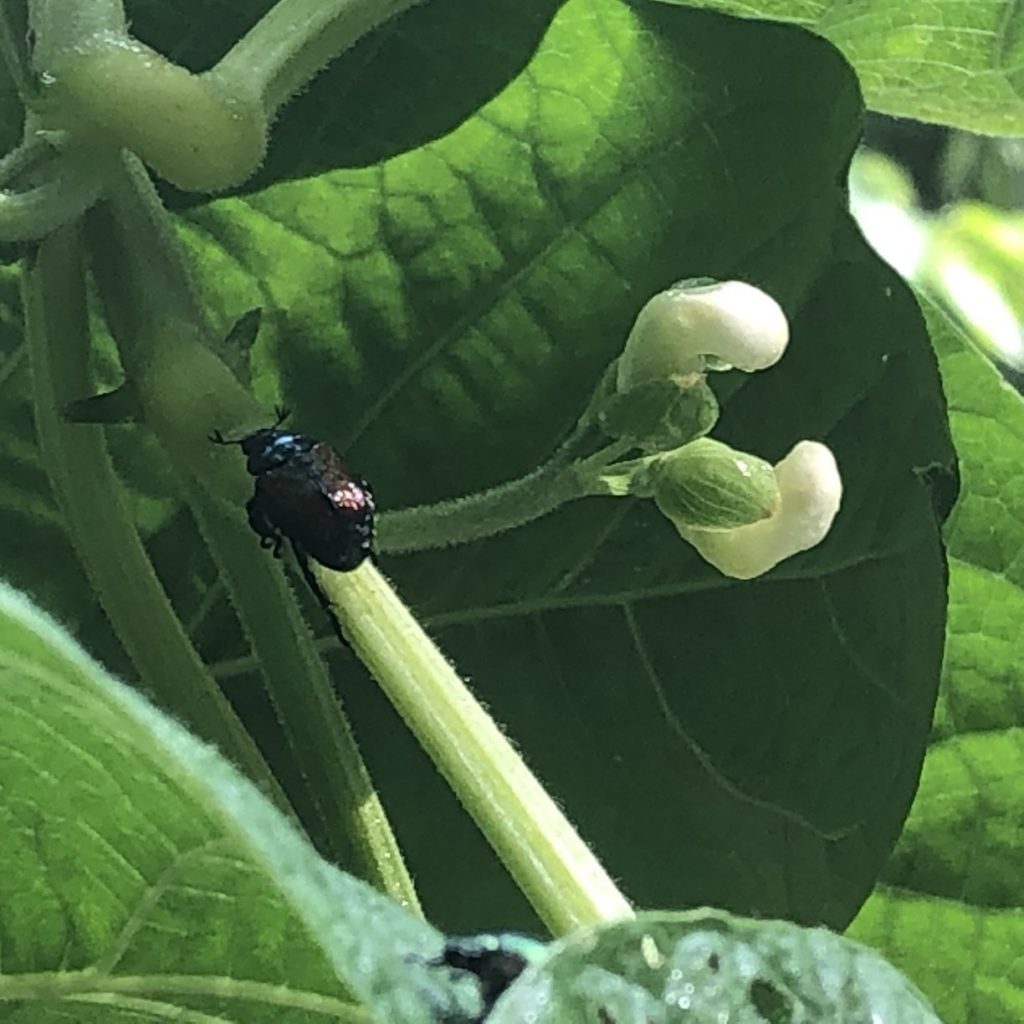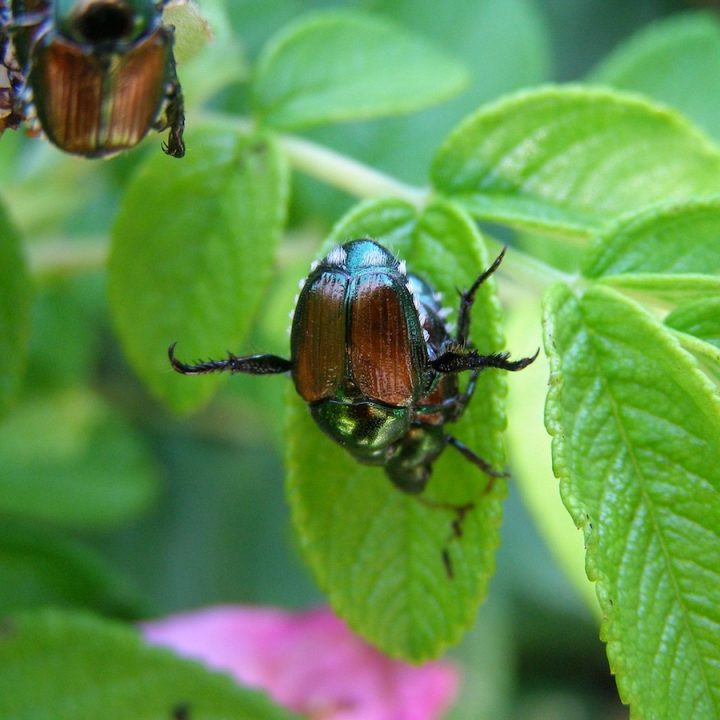When the Beetle Battles Begin
The hotter days of summer have ushered in two types of marauders for us: Japanese Beetles and Mexican Bean Beetles. Bad beetles. Chances are every gardener is battling some kind of beetle once the garden is in full production.
Naturally, beetles in and of themselves are not bad. Rather, they — like all creatures – are wired to survive. They do not have a vendetta against us or our plants. They are simply doing what they do: find food and eat it.
Unfortunately, some of it is also our food, and the leaves that feed our food crops. When that’s the case, we have to also do what we need to do for our garden plants to survive: get rid of the bad beetles in the garden.
We’ve diligently sprayed with kaolin clay, touted to help get rid of beetles and other bugs naturally. It has helped reduce the beetle population but has definitely not eliminated them.
But before we work on getting rid of the bad beetles in the garden, let’s identify them.
List of Bad Beetles in the Garden
- Blister beetle
- Colorado Potato Beetle
- Cucumber beetle / striped cucumber beetle
- Flea beetles
- Japanese beetles
- June beetles
- Mexican bean beetle
- Leaf beetles
Good Beetles in the Garden
- Ground beetles
- Ladybugs
“Ground beetles” is the name of a large group of predatory beetles that are beneficial as both adults and larvae. They will eat a wide range of insects, including nematodes, caterpillars, thrips, weevils, slugs, and silverfish.
~The Old Farmer’s Almanac
Mixed Beetles – Some Good and Some not
- Soldier beetles – may eat good garden bugs but also eat aphids and other destructive garden pests
Natural Remedies for the Bad Beetles
- Pyrethrin
- Spinosad
- Traps
Spinosad for Japanese Beetles
We’re growing as organically (pesticide-free) as possible so the next stage of pest control was insecticidal spray containing Spinosad. Spinosad is derived from bacteria that feed on crushed sugarcane. It’s classified as a natural pest control product and approved for organic treatment. [1]https://en.wikipedia.org/wiki/Spinosad
We mix our spray with a bit of insecticidal soap and HOT pepper sauce. If you follow suit, be cautious and follow the label, and of course wash your hands and avoid contact with eyes and other sensitive areas.
We spray the plants thoroughly on top and from underneath, which is done quickly and easily with our battery powered garden sprayer.
The Japanese Beetles present were obviously affected but we can’t tell whether they died or just left the scene. But there seemed to be enough reinforcements the next day that it’s a constant task to keep spraying.
Spinosad blended with soap and pepper spray got rid of the Japanese beetles for the day.

Spinosad for Mexican Bean Beetles
We applied the same Spinosad mixture for control of the Mexican Bean Beetles. They are at the larvae stage and bright yellow. Easy to spot and easy to smush. Just smushing helped but not enough.
We sprayed the Spinosad mixture for the Mexican bean beetles. It also helped, but not enough.

Pyrethrin for Beetles
We’ve now escalated to the top tier of organic firepower, pyrethrin. Pyrethrin is an organic compound derived from chrysanthemum flowers. It too is considered to have low toxicity to humans and is approved as an organic insecticide.
IMPORTANT: Pyrethrin does affect bees so it’s best to spray in the evening when bees aren’t so active. [2]https://en.wikipedia.org/wiki/Pyrethrin
Japanese Beetle Traps
We use the Japanese beetle traps as well. Some say it attracts more to your yard. We’ve tried a season without them and a season with them and didn’t detect more of a problem with them and it definitely helps to have something out there trapping them to supplement hand removal.
Natural Remedies for Aphids
If you’re battling black aphids or wanting solutions for how to get rid of aphids naturally, these articles should help.
Squash Pests
You can find info on preventing and/or getting rid of squash bugs and squash vine borer here.
Burn the Crops
Our first bean plants to produce were nearly done producing, and yet most affected by the Mexican Bean Beetles. We chose to remove that plot altogether and burn the plants in hopes of keeping the beetles from spreading to the rest of the garden and the beans next to them received a thorough spraying of pyrethrin.
Wishing you great gardens and healthy harvests!
G. Coleman Alderson is an entrepreneur, land manager, investor, gardener, and author of the novel, Mountain Whispers: Days Without Sun. Coleman holds an MS from Penn State where his thesis centered on horticulture, park planning, design, and maintenance. He’s a member of the Phi Kappa Phi Honor Society and a licensed building contractor for 27 years. “But nothing surpasses my 40 years of lessons from the field and garden. And in the garden, as in life, it’s always interesting because those lessons never end!” Coleman Alderson
References

